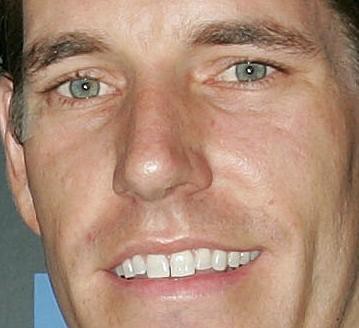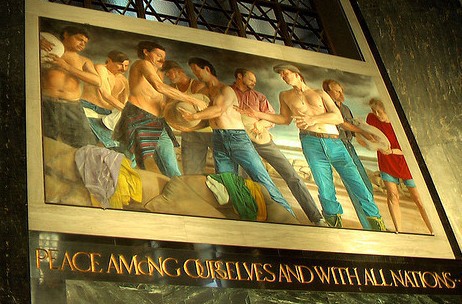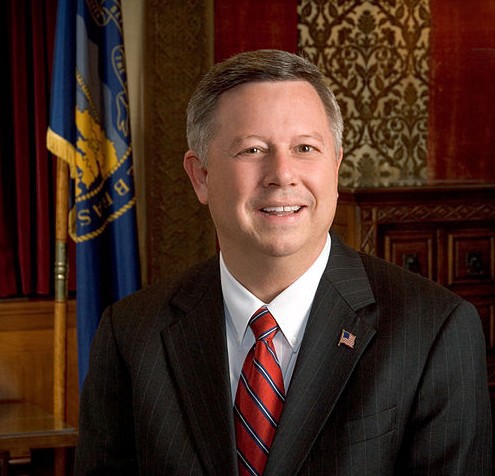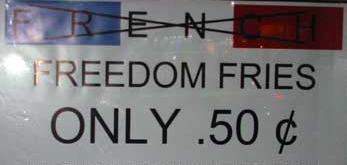Stalkerish Subject Lines From Emails Sent By Colleges And Universities After My Daughter Took The...
Stalkerish Subject Lines From Emails Sent By Colleges And Universities After My Daughter Took The PSAT, In Ascending Order Of Creepiness
by Allison Redstone

23. Question…?
22. Hey Stella, where are you going to college?
21. Waiting to hear from you…
20. Do I have your correct email address?
19. Is this you, Stella?
18. Do you still use this email?
17. Stella: Let me know if you’re interested
16. I’m missing your request…
15. Stella, please confirm your address
14. I need to reach Stella
13. I’m still trying, Stella
12. Stella — Please read!
11. Don’t let this pass you by…
10. I’d like to hear from you, Stella
9. Urgent: please read
8. Sound familiar, Stella?
7. Re: my previous emails to Stella
6. Special message for you
5. You’re one of the few, Stella
4. Stella, I can picture you here
3. Are you prepared?
2. Your time is running out
1. St. Olaf College will surprise you
Allison Redstone lives in Manhattan with her husband and two teenage daughters, neither of whom have the real name “Stella.” There’s a lot of talking and changing of outfits.
Photo by Tatiana12 via Flickr.
Why Do Our Elected Officials Love Cancer?

Do you want to care about something boring and dull but important? Sure you do! While the budget is being hammered out for our fine country’s 2011 fiscal year, so far the House has suggested they’d be happy cutting $1.6 billion from the National Institutes of Health. What’s that you say? We pay money from our taxes to go to health research? How disgusting! But it turns out that when legislators actually know what the NIH does, they want to give it more money, not less. Also? Unlike much of the government, the NIH makes money [PDF] for America. Through science! While they are, you know, curing diseases and stuff. But whatever. Cut that budget down!
Our Long National Winklevoss Nightmare Seems to Be Over

The Ninth Circuit — our favorite circuit! Sorry, other circuits! — has ruled that the Winklevosseseses must abide by a settlement reached with Facebook regarding their founding of such, or lack thereof. The two fellows claimed the settlement was reached with fraudulent input from Facebook. This sets a very important legal precedent, in that we don’t have to hear about them any more.
"Sean Eldridge and Chris Hughes are Pretty Serious Guys."
“Sean Eldridge and Chris Hughes are pretty serious guys. When they’re not hosting or going to fund-raisers, they spend most evenings at home reading an array of magazines (The New York Review of Books, The Economist) and books. “
— Books too, you say? What are they, some sort of Übermenschen? (Teasing.) This is why people might think twice before being profiled in magazines. But hey, when you’re “the wealthiest openly gay men in the world under 30,” it’s probably inevitable that people will be interested in learning more. What are ya gonna do!
Is 'Hanna' the First Movie All Year to Ace the Bechdel Test?

How many movies passed the Bechdel Test this year so far? Yes, sure, it’s a black/white, pass/fail set of criteria, which means that plenty of unconcerned products pass. So this year: From Prada to Nada and Bridesmaids both pass, which… might be sort of besides the point, or might be a related but more capitalist point? Jane Eyre squeaks under the wire. Briefly, Red Riding Hood too, which, uh. On a technicality, Paul. And Sucker Punch — though it’s also castigated as the most misogynist film in ages. Also The Last Lions, I think, if you count lady lions talking to other lady lions, I think, but maybe they are just talking about men. Though not sure if the lady lions have names? What else? Kind of maybe Big Mommas: Like Father, Like Son! (Later this year: Crazy, Stupid, Love, Bad Teacher and The Help all do.) But first among them is Hanna, which is a vastly terrific film! Here’s my own movie test: when the trailer is terrific, I am now highly suspicious about the movie. (See: Battle: Los Angeles. Awesome trailer, garbagey movie.) So the Hanna trailer had me concerned. But no! Exceeds expectations. Would do business again. Oscars all around! If anything, I wanted another 20 minutes of it. Or 200. Would happily take several sequels and a long-lasting franchise and an amusement park ride.
Six Degrees North Of Arizona: Nebraska's War On Immigration
by John Wenz

Nebraska is starting to look a lot like Arizona — legally, at least. Over the past few years, the state has enacted a spate of anti-immigration laws; and whether it’s State Senator Charlie Janssen’s unconstitutional witch hunt against all brown people, an ordinance in Fremont that bars employers from hiring illegal immigrants and landlords from renting to them, or, the latest assault, a law that denies public assistance to legal immigrants who have lived in the country less than five years, it seems the legislature and governor have one thing on their minds: making Nebraska a less friendly, less tolerant state. In February, Governor Dave Heineman ordered the legislature to strip undocumented workers of pre-natal care, a move that drew sharp condemnation even from traditional Republican allies like Nebraska Right to Life .
But it wasn’t always like this.
Immigration didn’t become a center-stage issue in the state until the 2006 primary race for governor. Back then, Dave Heineman was a relatively new governor, having ascended to the post only a couple years before when then-Gov. Mike Johanns joined Bush’s cabinet as Secretary of Agriculture. As Johanns’s lieutenant, Heineman had had little visibility, and his two years as governor had allowed him scant time to connect with voters. Now he faced a tough competitive primary against Congressman Tom Osbourne, a center-right Republican from the western end of the state who had enjoyed a 25-year career as the head coach of the Cornhuskers football team.
Though Osborne was popular among his largely rural constituents, he had spent much of his time in Nebraska in Lincoln, and in the primaries, connected more with urban voters. Heineman, seeing the opportunity for a primary victory, campaigned heavily in rural areas. Osbourne was a soft-spoken, low-profile congressman, amenable to bipartisanship, famously teaming with outspoken liberal Ernie Chambers as spokesmen for a gambling ban in the state. He also differed with his party on issues such as the death penalty, where he claimed his years as football coach had shown him a justice system disproportionately skewed towards penalizing minorities.
Heineman, on the other hand, was more of a party operative. He’d worked for two Nebraska congressmen, then served four years in the Fremont city council before first campaigning for (and winning) office as state treasurer in the ’90s. He was appointed lieutenant governor in 2001. Along the way, he’d established conservative bona fides and become known as a party man and something of a firebrand.
Experience had taught Heineman that a trigger issue for rural voters was the supposed looming threat of immigration, and in a nakedly political move, he made it his campaign issue.
Playing Off Immigration Fears

While people outside the state may be unaware of it, Nebraska sees frequent immigration both through relocation of refugee populations and workers (both documented and undocumented) seeking employment, mostly in the meat-packing industry. Omaha is home to the majority of these plants, but they also crop up in cities like Lexington and Fremont. (The metro area of Omaha has a population of about 865,000; Lexington and Fremont are much smaller, with populations of about 10,000 and 26,000 respectively.)
The immigration issue would be a non-starter in a city as diverse as Omaha. But it played well in rural areas where there were growing fears of “takeover.” Places like Lexington (a town famously highlighted as a “rural ghetto” in Eric Schlosser’s Fast Food Nation), where the IBP plant had brought in a wave of Hispanic workers, had become one of the few majority minority communities in the state outside of Native American reservations — and these changes made many rural voters uneasy.
That Heineman was going to use immigration as a wedge issue in the primary first became evident when, in 2006, Nebraska’s legislature moved to pass a state version of the DREAM Act, a bill that would have enabled children of undocumented workers to gain in-state college tuition provided they met certain educational criteria. Heineman vetoed it.
In campaign ads, Heineman announced: “Illegal immigration puts a burden on our taxpayers.” While the act ultimately passed after a veto override, the move cemented Heineman’s status as the anti-immigration candidate. Heineman hammered away at the message in a series of mailings that called him “the only candidate for governor who opposes giving in-state tuition to illegal immigrants.” This after his opponent Osborne went on record saying, “I really don’t think you punish children for what their parents did.”
As Polipundit reported at the time:
In a debate at Norfolk, Neb., in April, Osborne attacked Heineman over the veto. “You don’t punish somebody for something they had no control over,” he lectured the governor. “Why would you take away that opportunity to better themselves?”
Heineman fired back that giving tuition breaks at tax-funded colleges to people in the country illegally is “not right. It’s not fair. It’s not appropriate. There is a legal way to go through the immigration process.”
Evidence that Osborne feared he had injured himself on the issue emerged when his campaign started doing “push polls” trying to paint Heineman as weak on illegal immigration. NebraskaStatePaper.com dubbed the push polling “the telephonic equivalent of an attack ad.” In one call, the voter was told: “Tom Osborne has voted for tighter border security and proposed measures to allow hard-working immigrants to obtain temporary worker visas. Dave Heineman does not even have a position on illegal immigration listed on his Web site. Does his silence on illegal immigration make you less likely to vote for Dave Heineman?”
In the waning weeks of the campaign, Osborne was forced to defend his own record on immigration in televised ads. It wasn’t enough. When all was said and done, Heineman defeated the previously favored Osborne 50 to 44, with a third candidate garnering the remainder of the vote. Omaha city councilman Chuck Sigerson attributed the victory to Heineman’s veto of the DREAM bill — and Osborne’s ambivalence on the issue.
Heineman went on to win the governor’s race that fall with nearly three quarters of the vote, the Democrats, miscalculating that Osborne’s win was a foregone conclusion, having failed to run a party-machine candidate.
Heineman Finds Allies
Heineman’s victory would mark a strong shift in Nebraska’s politics. Since then, immigration has remained a hot button for those seeking office. As a recent report(pdf) by the University of Nebraska-Omaha Office of Latino and Latin American Studies (OLLAS) summarized: “Candidates running for office, who only a few years before had fought for migrant rights and publicly recognized the need for the immigrant labor force, began to respond to the anti-immigrant voices and to support anti-immigrant legislation at the federal and state levels.”
A year after the election, in 2007, the DREAM Act failed to pass in the Senate, sparking nationwide protests. The OLLAS report weighs whether these protests themselves may have catalyzed negative public opinion about immigration:
The questions that many have asked since then — and which are far from having a definitive answer — are: “Did these public demonstrations actually accelerate the climate of anti-immigrant policies to which the marches themselves were responding?” or, to the contrary, “Did the impressive coalition that consolidated during those protest marches make it possible to strengthen the formation of migrant organizations and their civic incorporation into the destination communities?
Whatever the cause, in Nebraska, the mood remains sour. By playing upon this unease, Heineman has continued to see his popularity soar, winning reelection last fall by a wide margin against yet another sacrificial lamb Democrat. In a year that saw the rise of the Tea Party, Heineman stuck to his “loyal conservative” credentials — offering up continued support for anti-immigration laws.
He also now has allies in his anti-immigration fight — and many of his opponents have been removed. In 2008, a term-limit law was passed that limited state senators to two terms. The law brought about a sea change in Nebraska’s politics, removing many experienced legislators from seats they had long held. Among these was Ernie Chambers, who had often single-handedly filibustered some of the more insidious conservative legislation. The Nebraska Unicameral also lost its first (and to date, only) Hispanic representative, Republican Ray Aguilar of Lexington.
Replacing these legislators was a new crop of ambitious party players quick to pick up on Governor Heineman’s lead. Within a year of their taking office, at least a dozen anti-immigration bills were introduced into the state legislature, including a bill to deny public benefits to undocumented workers and another that made it mandatory for Nebraska employers to use e-verify to monitor their employees’ immigration status.
But it’s in state senator Charlie Janssen that Heineman has found his hometown right-hand man. Janssen is a mercurial legislator with a heavily conservative agenda, known for controversial statements and bullish behavior toward critics. Since joining the senate in 2008, Janssen has introduced legislation that, mirroring the law in Arizona, would enable police to detain suspects on suspicion of illegal status and requires legal citizens to have their papers always on hand in case of search. In addition, Janssen has sought to de-fund the Mexican-American Commission of Nebraska, and destroy the Nebraska DREAM Act through amendments to the state’s e-verify laws. He’s also drawn sharp rebukes from Somos Republicans for his repeated use of the term “anchor baby.”
Another Heineman ally is Kris Kobach, a lawyer for the Federation for American Immigration Reform and now-Kansas Secretary of State. It was Kobach who crafted the harsh local ordinance in Fremont (hometown of Heineman and Janssen) that attempts to bars employers from hiring illegal immigrants and landlords from renting to them. Written by an out-of-state radical right operative, the ordinance passed by citizen vote.
A Few Cracks In The Wall
While there is no doubt that Nebraska has shifted right in the past few years, there are a few indications of a countervailing push happening in the state. In the 2008 presidential election, one of the state’s electoral votes went to Barack Obama, the first time Nebraska had handed an electoral vote to a Democrat since the 1964 landslide victory of Lyndon Johnson. Nebraska and Maine are the only states in the nation to deny a winner-takes-all electoral victory in favor of a vote each for winners of the district, and two additional to the overall state winner. The city of Omaha easily carried for Obama, whereas suburban areas like Sarpy County (which is home to the Offutt Air Force Base) trended toward McCain. The victory was due in part to get out-the-vote efforts made in the predominantly black neighborhoods of north Omaha and the heavily Hispanic neighborhoods on the city’s south side. As a result, a vote was delivered — and the 2011 session of the state legislature brought attempts by Republicans to return to a winner-takes-all electoral system.
This electoral vote came out of the 2nd Congressional District, which includes the metro area of Omaha. But the 1st District — which encompasses a long stretch of the eastern part of the state — came with nine percentage points of victory for Obama, too. And part of this pro-Democratic shift can be attributed to that area’s influx of Latino voters.
According to 2010 census estimates, Latinos represent nine percent of Nebraska’s population and account for 63 percent of the state’s population growth. Some believe these figures are too low. Marien Ruiz, director of El Centro de las Americas, told a Lincoln television station, “Even though we were partners with the census and tried to encourage our community to fill out the census, I know a lot of our families didn’t. They were afraid or they didn’t feel secure enough to do it. I know they are underestimated.”
The census results showed that in two Nebraska communities Latinos make up the majority of the population — Lexington and Schuyler, a town of 6,211 located just an hour north of Lincoln. Other communities like South Sioux City (population 13,353) have a population that’s about 45 percent Latino, up from 25 percent a decade ago. The population of Grand Island, the state’s fourth largest city and a major relocation place for refugees, is now 27 percent Latino, up from 14 percent a decade ago. In fact, of the state’s ten largest cities, only three had a population that was less than 10 percent Latino.
As this population grows, many of Janssen’s feared “anchor babies” will come of age, and many other Latino voters will become naturalized citizens. For now, state politicos are choosing to meet these changes by enacting regressive policies. It will only be just if these laws, which are so degrading to wide swathes of the state’s population, come back to haunt them as this new generation of Nebraskans reaches voting age. If trends continue and workable solutions are ignored, politicians like Heineman and Janssen are going to have a new crop of angry, organized voters to face.
John Wenz is a freelance writer living in Lincoln, Nebraska. He is an Admiral in the Great Navy of the State of Nebraska, and writes a biweekly column for Hear Nebraska about Nebraska’s rich musical history. He really likes Brussel sprouts and cats.
Photo of Nebraska State Capitol by Rick McCharles via Flickr.
Come Back to Greater Kazakhstan

It’s always delightful to read about places that one has no temptation to visit and will never, ever see! So today’s travelogue of Kazakhstan and its 16-year-old capital, Astana, is fantastic, and as you are a subscriber to the New Yorker, you will have no problem reading it online or in the magazine, yes? Plus there are some excellent and blunt surprises — if, I suppose, corruption and horror and vast wealth going hand-in-hand are ever a surprise — mid-tale for those who are similarly and happily uninformed as I. Gosh, I hope I never live to see this frosty new hell-hole in person.
People Should Stop Saying Mean Things About Bob Dylan
“I never liked him. He seems sort of unpleasant and uncomfortable.”
— Bill “Smog” Callahan, in the (subscription-only) New Yorker, on Bob Dylan, who is having a tough week in the press. This kind of blows my mind. I mean, sure, I guess Dylan can come across that way. Like, his personality. It’s been noted before. Lou Reed once said, “If you were at a party with him, I think you’d tell him to shut up.” But still, he’s the best at what he does, and it hurts me a little to hear other songwriters snipe like that. Though when Maureen Dowd (and/or whichever one or more of her friends wrote her column on Sunday) calls you a sell-out and a hypocrite and an idiot, that might be easily taken as a compliment.
Time to Boycott French Toast, French Fries Again

That French “veil” law that we have been making fun of for ages has finally gone into effect and, predictably, it is going poorly: it looks as if 61 people (only 19 of them women) have been arrested today for demonstrating against it, for starters. (Most offensively, while you may be fined for covering your face in public, you may also be required to take classes in “French citizenship,” which has got to be, at best, stultifying. Also, most stupidly, the police can’t stop you on the street to ask you to remove your burqa or what-have-you: instead they are required to escort you to a police station. Now that’s good planning!) Two other women have been “detained” (whatever that means!) and also so have their “male colleagues,” who were presumably… not wearing burqas? And of course France considers this an incitement to “racial hatred.” I understand that the French have a different idea of “being” French (now more legislated than ever!) than we do of “being” American but this is some serious idiocy.
A Useful Look at the Current Wall Street Mindset

I can summarize the well-informed tripartite New York magazine cover story on Wall Street, while eliding all the details: pretty much no one learned anything, rich people really enjoying spending money, it’s not unlikely there’ll be a round two mortgage debacle, Wall Street is more consolidated than ever and poses a “greater systemic risk,” we’re off to enjoy/exploit the BRICs (and CIVETs and EAGLEs, et al), even though Goldman Sachs, among others, took a bath on them over the last few years, slightly fewer Harvard MBA graduates are going straight into Big Finance (they’re all becoming consultants, which, same diff!), and lots of people on Wall Street are irritated at the negative attention and don’t understand why they can’t just keep on rollin’. Also you probably shouldn’t trust them with your retirement money, still. Surprise!
